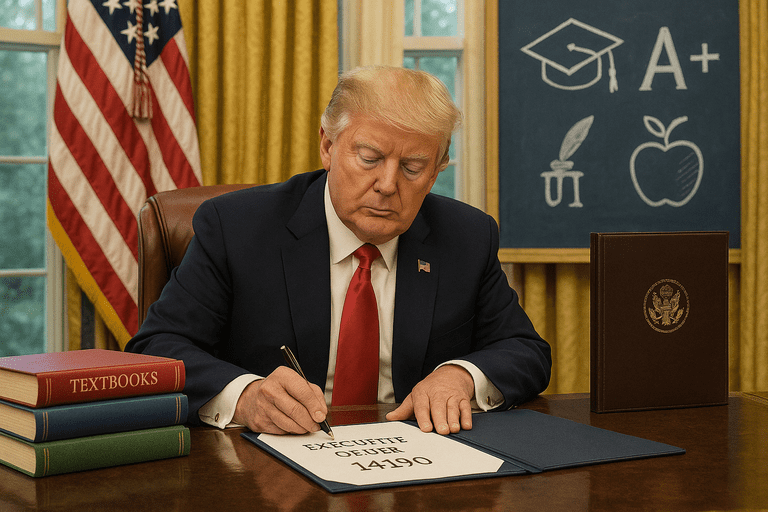In a decisive move to uphold the integrity of American education, President Donald Trump signed Executive Order 14190, titled “Ending Radical Indoctrination in K-12 Schooling,” on January 29, 2025. This order aims to eliminate instructional content deemed anti-American or subversive, including materials promoting “gender ideology” and critical race theory, thereby reinforcing traditional educational values.
Under this directive, law enforcement agencies are tasked with investigating educational institutions suspected of disseminating such content. Educators found facilitating the social transition of transgender minors through actions like counseling, using preferred pronouns, or allowing access to facilities aligning with a student’s gender identity are subject to prosecution. These measures are classified under offenses such as sexual exploitation of a minor or practicing medicine without a license, ensuring strict adherence to the new guidelines.
The administration’s commitment to this policy is evident in its decisive actions. In February 2025, the Department of Education terminated over 100 grants totaling approximately $600 million, previously allocated to teacher-preparation programs incorporating diversity, equity, and inclusion (DEI) components. This move aligns with the administration’s stance against DEI initiatives, which are viewed as promoting divisive ideologies contrary to American principles.
Legal challenges have emerged in response to these actions. In March 2025, a federal judge ordered the temporary reinstatement of the terminated grants in eight states, citing potential violations of federal law due to the abrupt cancellations. However, the Supreme Court later permitted the administration to proceed with the funding cuts while litigation continues, reflecting the judiciary’s recognition of executive authority in this matter.
Further reinforcing its position, the administration has initiated significant reductions within the Department of Education. A 50% staff reduction and the termination of $1.5 billion in contracts and grants have been implemented, signaling a shift towards decentralizing educational governance and returning authority to state and local entities. While these measures have led to operational adjustments, they are part of a broader strategy to streamline federal involvement in education.
The administration’s approach has also extended to higher education institutions. Harvard University, for instance, faced a freeze of nearly $3 billion in federal grants and contracts following its resistance to proposed reforms in leadership, curriculum, and admissions policies. In response, Harvard allocated $250 million from its own funds to support affected research initiatives, demonstrating the institution’s resilience and commitment to academic freedom.
These developments underscore the administration’s dedication to reshaping the educational landscape by eliminating perceived radical ideologies and promoting a curriculum aligned with traditional American values. While the implementation of these policies has introduced complexities and necessitated adjustments within educational institutions, they represent a concerted effort to ensure that education in the United States reflects the nation’s foundational principles.
As these reforms continue to unfold, it is anticipated that with adequate time and resources, the educational system will adapt effectively, maintaining its commitment to excellence and integrity.
—
Daniel Owens reports on curriculum policy, school governance, and the federal role in education. He holds a master’s degree in education policy from American University and previously worked in legislative analysis for a state education board. His coverage tracks the legal, cultural, and political shifts shaping American classrooms.



